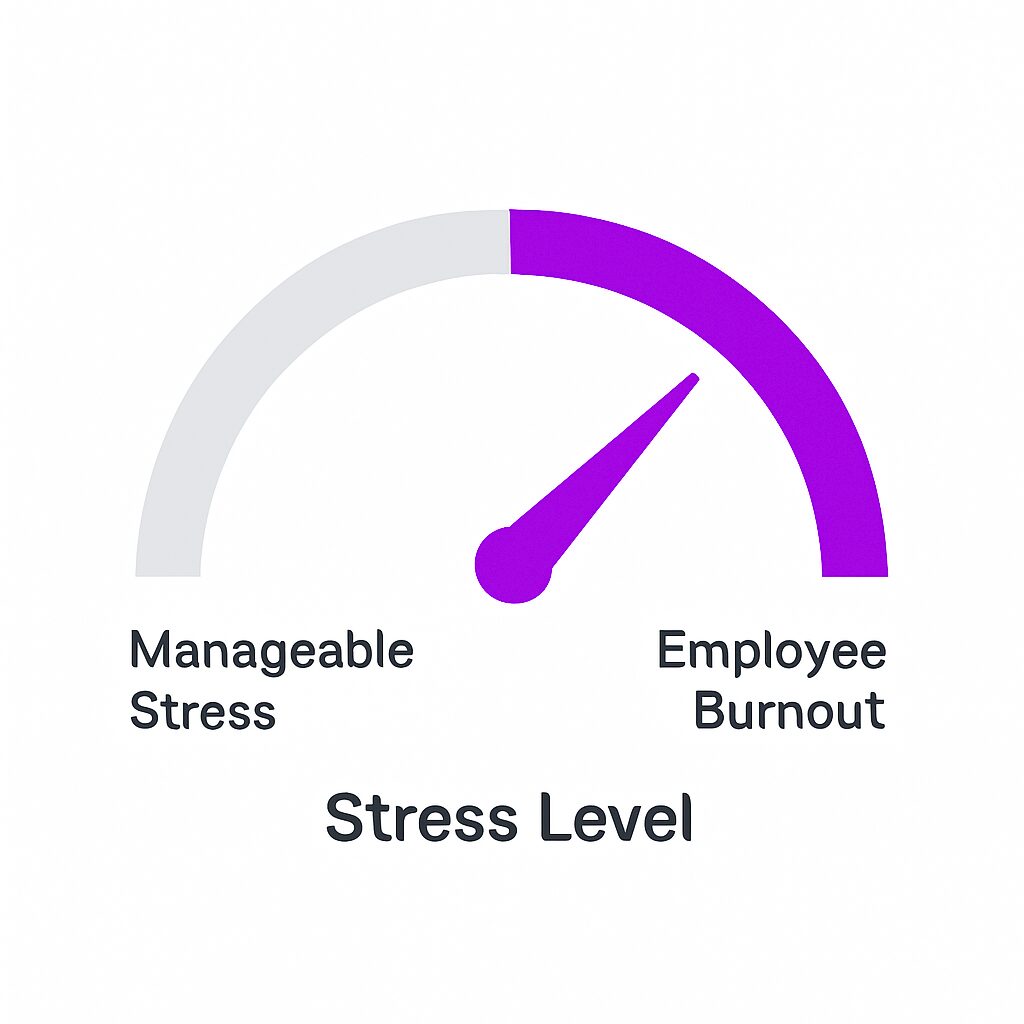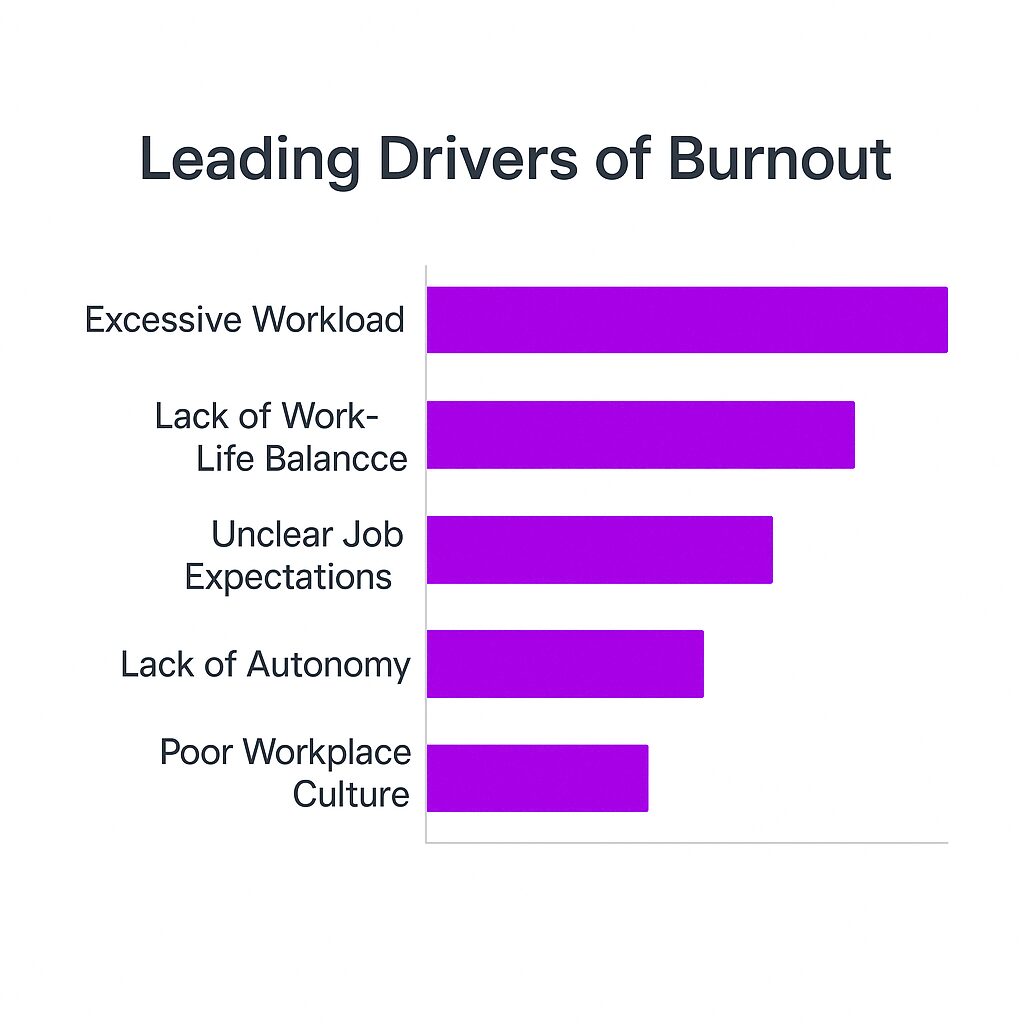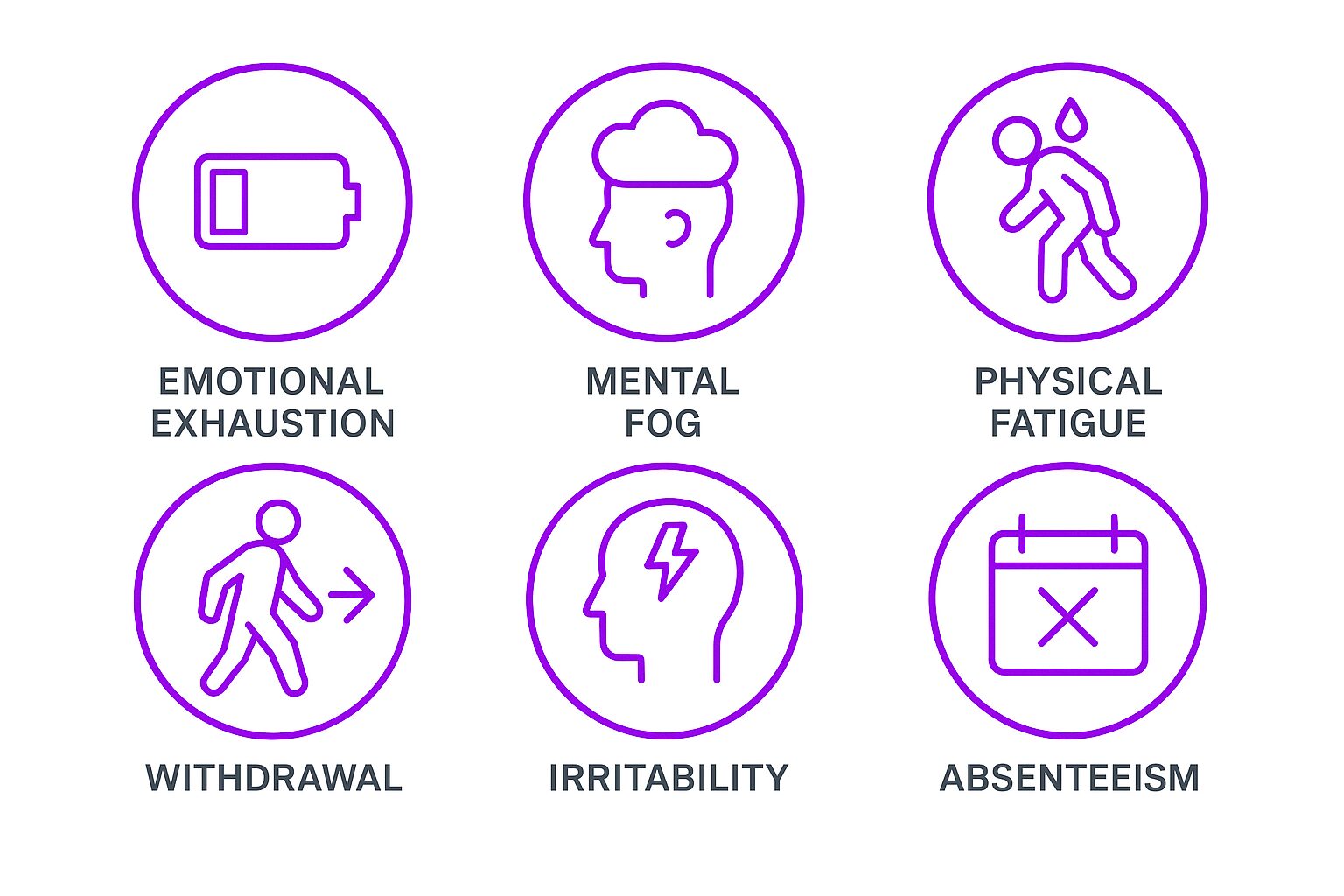What is Employee Burnout?
Employee burnout, also known as job burnout, is a state of prolonged physical, emotional, and mental exhaustion caused by excessive workplace stress. It occurs when employees feel overwhelmed, emotionally drained, and unable to meet the constant demands of their job. Over time, burnout reduces productivity and motivation, leading to disengagement and, in severe cases, serious mental and physical health issues. The World Health Organization (WHO) classifies burnout as an occupational phenomenon rather than a medical condition, emphasizing that it stems from workplace stress that has not been successfully managed.
Understanding Employee Burnout
Burnout is not the same as feeling temporarily stressed or overworked. Stress is a normal part of work, but chronic job stress can lead to burnout, a condition that does not go away with time off or simple adjustments. Employees experiencing burnout may feel detached from their work, unmotivated, and resentful. Their performance declines, and they may struggle to concentrate or complete even basic tasks. In some cases, burnout leads to absenteeism, resignation, or long-term health problems such as anxiety, depression, or cardiovascular disease.
Key Causes of Employee Burnout
Excessive Workload and Chronic Workplace Stress
When employees are expected to handle unrealistic workloads or meet demanding deadlines, burnout becomes inevitable. The inability to take breaks or recover from one task before moving to another leads to mental fatigue. Providing support systems and resources can help employees manage their workloads more effectively, reducing the risk of burnout.
Lack of Work-Life Balance
Employees who struggle to disconnect from work often experience burnout. This is common in roles with high demands, remote work environments without clear boundaries, and companies with a culture of “always being on.” Maintaining a healthy work-life balance is crucial for an employee’s well-being and can significantly reduce the risk of burnout.
Unclear Job Expectations
When employees are unsure about their responsibilities, priorities, or goals, they experience frustration and anxiety. A lack of clear direction or constantly shifting expectations can lead to stress and exhaustion.
Lack of Autonomy
Micromanagement and rigid work environments prevent employees from having control over their tasks and schedules. Employees who lack decision-making power may feel powerless, which contributes to burnout.
Poor Workplace Culture
A toxic or unsupportive work environment makes burnout worse. If employees feel unappreciated, isolated, or subject to favoritism, workplace politics, or negative leadership, their stress levels increase. Positive relationships with co-workers can enhance job satisfaction and reduce the likelihood of burnout.
Limited Career Growth
When employees do not see opportunities for professional development, they may feel stuck or unmotivated. A lack of career progression leads to disengagement and dissatisfaction. Occupational health psychology can provide insights into creating effective career development programs that address the underlying causes of stress and burnout.
Signs and Symptoms of Employee Burnout
Employee burnout is a state of emotional, mental, and physical exhaustion caused by prolonged stress, overwork, and lack of balance in life. Recognizing the signs and symptoms is crucial to preventing and addressing burnout effectively.
Emotional, Mental, and Physical Exhaustion
One of the most telling signs of burnout is emotional exhaustion. Employees experiencing burnout often feel drained, depleted, and overwhelmed, leading to feelings of hopelessness and despair. This emotional exhaustion can spill over into mental exhaustion, resulting in decreased cognitive function, difficulty making decisions, and a lack of motivation. Physical exhaustion is also common, manifesting as persistent fatigue, headaches, and a weakened immune system. These symptoms collectively contribute to a decline in an employee’s well-being and overall health.
Behavioral Signs
Behavioral changes are another key indicator of burnout. Employees may start to withdraw from social interactions and activities, both in their personal lives and at work. Increased absenteeism or tardiness can also be a red flag, as employees struggle to find the energy to face their daily tasks. Productivity and performance often take a hit, with employees showing less interest and motivation in their work. Irritability and mood swings become more frequent, and employees may become more sensitive to feedback and criticism. Recognizing these behavioral signs early can help in taking proactive steps to prevent employee burnout.
How Employee Burnout Affects Individuals and Organizations
Workplace burnout is not just a personal issue—it impacts businesses as well. Employees who are burned out become less productive, more prone to errors, and less engaged with their work. They may take more sick days or eventually leave the company, increasing turnover rates and hiring costs.
Effects on Employees: Emotional Exhaustion
-
Persistent exhaustion and fatigue
-
Decreased motivation and job satisfaction
-
Difficulty concentrating or making decisions
-
Increased irritability and frustration
-
Higher likelihood of mental health issues such as depression or anxiety
Effects on Organizations
-
Higher absenteeism and turnover rates
-
Reduced productivity and efficiency
-
Lower employee morale and engagement
-
Increased healthcare and disability costs
-
Poorer customer service and brand reputation
How to Prevent and Manage Employee Burnout
Promote Work-Life Balance
Encourage employees to disconnect from work outside office hours. Flexible work schedules, clear boundaries, and enforcing time off help employees recharge.
Provide Mental Health Support
Offer access to counseling services, wellness programs, or mental health days. Openly discussing mental health reduces stigma and encourages employees to seek help. Addressing mental health issues that may stem from an employee’s personal life is also crucial in preventing burnout.
Set Realistic Workloads
Managers should monitor workloads to ensure employees are not overwhelmed. Delegating tasks effectively and ensuring reasonable deadlines can help prevent burnout.
Recognize and Reward Employees
Employees who feel appreciated and valued are less likely to burn out. Recognizing achievements and offering incentives can boost morale and motivation.
Foster a Positive Work Culture
A supportive environment where employees feel safe, respected, and heard reduces stress and improves job satisfaction. Encouraging collaboration and open communication makes employees feel more engaged.
Encourage Employee Autonomy
Giving employees control over how they complete their tasks builds trust and prevents feelings of helplessness. Autonomy can increase job satisfaction and reduce burnout risks.
Train Managers to Identify Burnout
Supervisors should be trained to recognize the early employee burnout signs. Regular check-ins, transparent communication, and offering resources for stress management can help address issues before they escalate.
Measuring and Analyzing Burnout
Understanding the prevalence and impact of burnout within an organization is essential for developing effective prevention and intervention strategies. Various methods can be employed to measure and analyze burnout, providing valuable insights into employee well-being and organizational health.
Surveys and Feedback
Surveys and feedback sessions are powerful tools for gauging the extent of burnout among employees. One widely used survey tool is the Maslach Burnout Inventory (MBI), which measures three key dimensions of burnout: emotional exhaustion, depersonalization, and reduced personal accomplishment. By regularly administering such surveys, organizations can track changes in employee burnout levels over time.
Feedback sessions, whether through one-on-one meetings or group discussions, offer employees a platform to voice their concerns and share their experiences. These sessions can uncover specific stressors and areas where employees feel unsupported. By actively listening to employees and encouraging open communication, organizations can identify patterns and develop targeted strategies to address chronic workplace stress.
Challenges in Addressing Employee Burnout
Recognizing Burnout Early
Many employees do not openly express when they feel burned out. They may fear appearing weak or uncommitted. Creating an open culture where employees feel comfortable discussing stress is essential.
Overcoming Stigma
Mental health and burnout discussions still carry stigma in many workplaces. Employers need to foster an environment where seeking help is normalized and encouraged.
Balancing Workloads
While reducing workloads can help prevent burnout, businesses must also meet their operational goals. Finding the right balance between efficiency and employee well-being is a challenge.
Changing Workplace Culture
A company with a high-stress culture will struggle to implement meaningful change. Changing organizational habits and expectations takes time and effort.
Related Concepts
Workplace Stress
Short-term stress is normal, but chronic stress without relief leads to burnout.
Employee Engagement
Engaged employees feel connected to their work, which makes them less likely to burn out.
Mental Health in the Workplace
Companies that prioritize mental health create an environment where burnout is less common.
Resilience Building
Helping employees develop coping skills and stress management strategies can reduce burnout risks.
Real-World Examples of Burnout and Prevention Strategies
Tech Industry
Tech companies often face burnout due to demanding deadlines and long hours. To combat this, companies like Google and Microsoft have introduced wellness programs, flexible schedules, and mental health initiatives.
Healthcare Sector
Healthcare professionals, particularly nurses and doctors, are highly susceptible to burnout due to long shifts and high-pressure environments. Many hospitals are introducing stress management training and mental health resources to support their employees.
Remote Work Environments
Remote employees often struggle with burnout due to blurred work-life boundaries. Some companies have introduced policies requiring employees to log off after work hours and take mandatory vacation time.
Final Thoughts
Employee burnout is a widespread issue that affects both individuals and organizations. Companies that recognize the signs of burnout and take proactive steps to prevent it can create healthier, more productive workplaces. Prioritizing mental health, promoting work-life balance, and fostering a positive work environment are critical to reducing burnout and improving employee well-being. Organizations that invest in their employees’ well-being ultimately see better retention, engagement, and long-term success.







